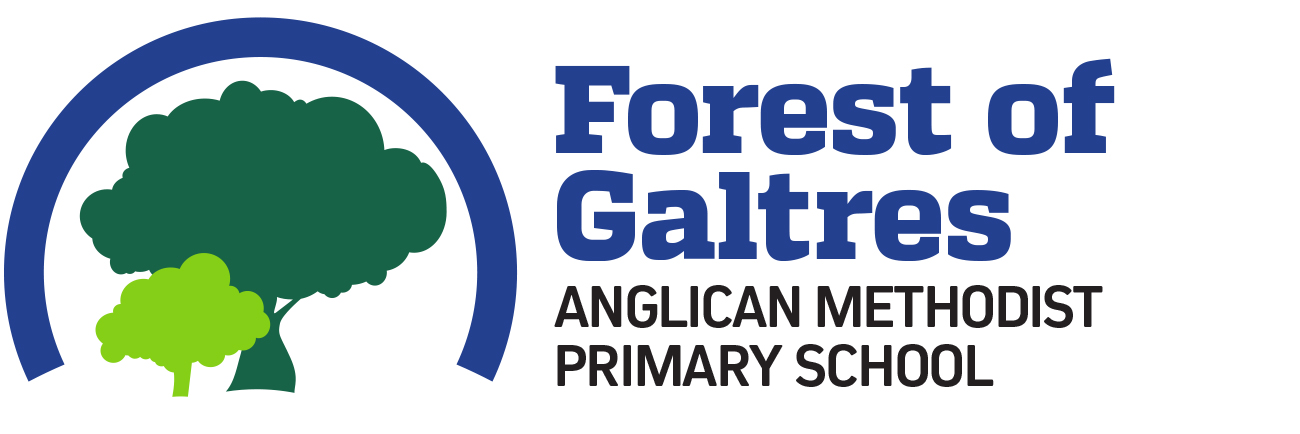Phonics
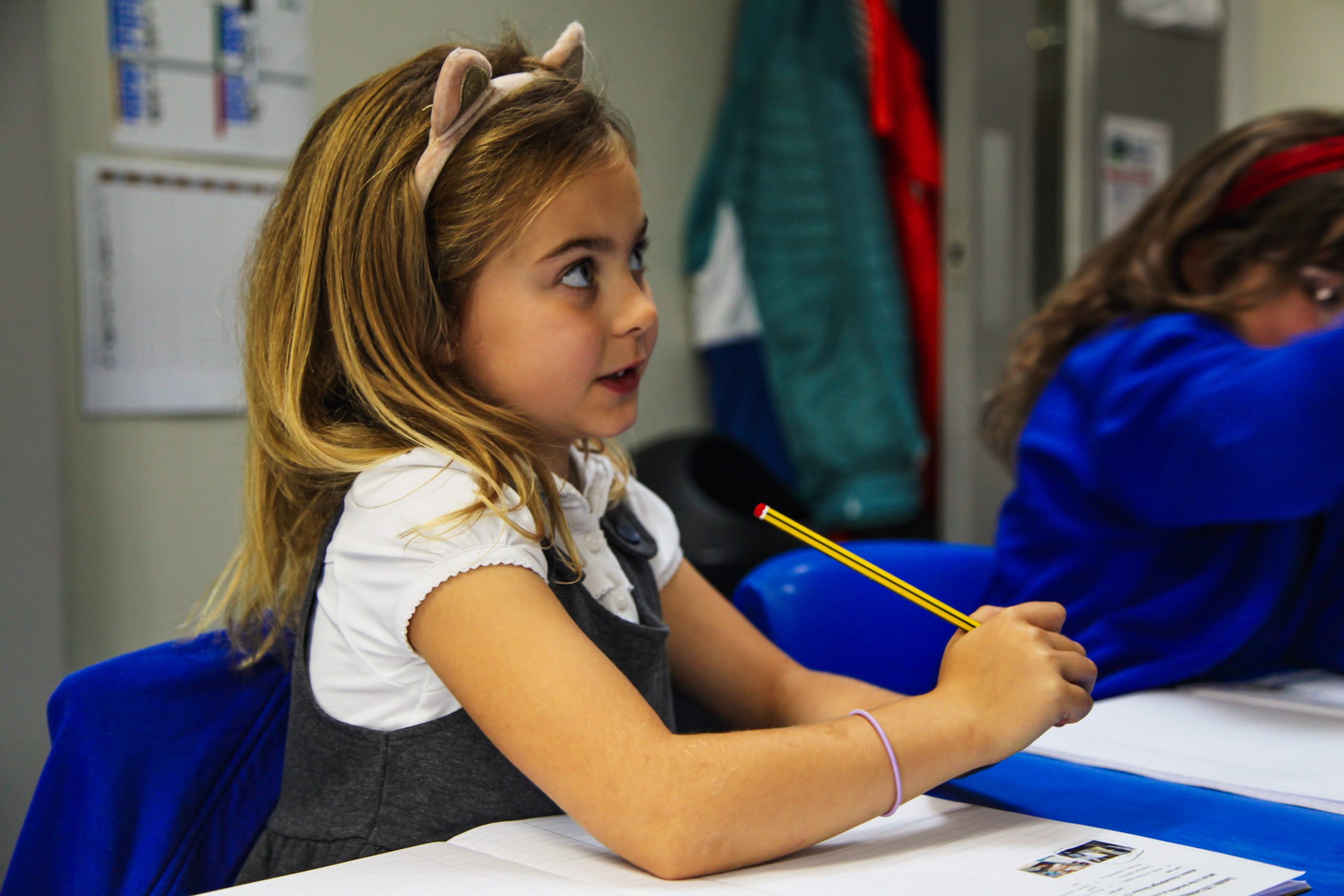
Phonics
At Forest of Galtres, we show relentless determination that every pupil will learn to read. We believe that phonics provides the foundations of learning to make the development into fluent reading and writing easier. We use a Systematic, Synthetic Phonics programme called Read, Write Inc. which teaches our children the core skills of segmenting and blending to start children on their ‘reading journey’ and flourish as learners throughout their time at our school.
Intent
The intent behind our phonics approach is to:
- Deliver a high-quality systematic synthetic phonics programme of proven effectiveness, followed with rigour and fidelity so that children are taught consistently to use phonics as the route to reading unknown words.
- Ensure that children are taught at their exact level through regular accurate assessments. Provide daily tutoring to ensure that all children make good or better progress.
- Pace of the phonics programme is maintained through high quality teaching and ongoing coaching and assessment by a trained reading lead so that children become confident, fluent and independent readers.
- Ensure children’s reading books show a cumulative progression in phonics knowledge that match the grapheme-phoneme correspondences they know to support decoding skills, building fluency.
Implementation
Phonics is implemented through the Read Write Inc programme.
Daily phonics lessons in Reception and KS1
We teach phonics from the Summer Term in Nursery and use the Read Write Inc expectations of progress document to ensure that children keep on track. Children build on their growing knowledge of the alphabetic code, mastering phonics to read and spell as they move through school.
We teach phonics for 1 hour a day. In Reception, we build from 15-minute lessons, with additional daily oral blending games, to the full-length lesson as quickly as possible. We also carry out ‘pinny time’ daily in Reception too.
Teaching order of sounds –
|
Set 1 sounds |
m a s d t i n p g o c k u b f e l h sh ck r j v y w th z chq u x ng nk |
|
Set 2 sounds |
ay ee igh ow oo OO ar or air ir ou oy |
|
Set 3 sounds |
ea oi a-e i-e o-e u-e aw are ur er ow ai oa ew ire ear ure tious/cious tion |
|
Additional set 3 sounds |
kn, ph, wh, e-e, au, ue |
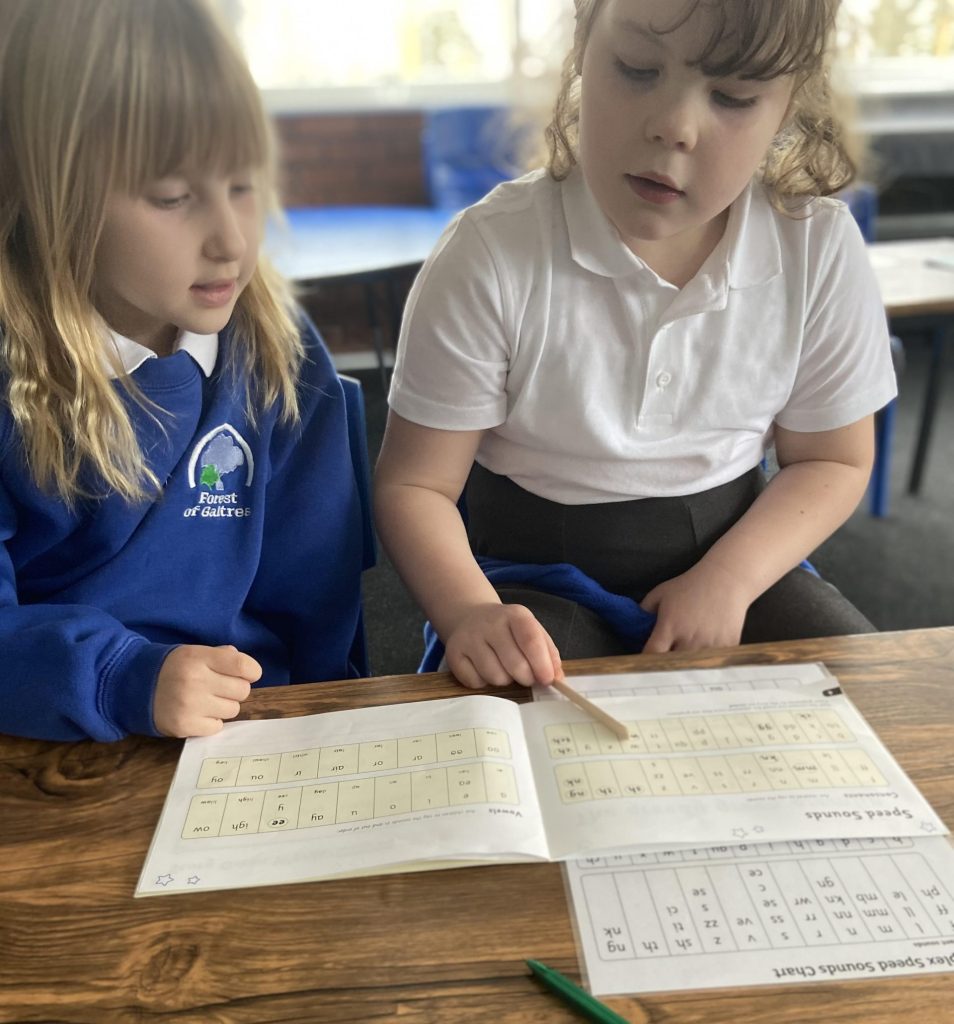

APC Cycle
We follow the Assess, Practice, Coach cycle in which half termly assessments are carried out and bespoke practise sessions are carefully planned to meet the needs of the most vulnerable learners (spotlight children)/ All practise sessions are planned out on a practise map and are always data driven. The reading leader then provides weekly side by side coaching for reading teachers focussing on what was taught in the practise session.
Assessment and one to one tutoring
Children are taught phonics in groups according to their reading level rather than their year group. This means that children are always taught at their exact level to maximise progress. Our reading leader assesses children at least every 6 weeks to ensure that children are in the correct group and make good or better progress.
Children that are not keeping up with the expectations of progress are given daily one to one tutoring. Our tutors are all fully trained and also have regular coaching by our reading leader and external consultant trainer. We follow the RWI Fast Track Tutoring document which ensures that our interventions are high quality and bespoke to each child.
Regular progress meetings are held with all reading teachers in order to monitor the children that they teach and their progress.
Using the RWI scheme means that if children join our school at different points during the year there is always an appropriate group for them to join. Children are always assessed within the two weeks of arriving at our school and swiftly moved into a group so that they can start or continue their reading journey.
Teaching reading: Reading at home
Within their RWI sessions, children begin to read books as soon as they learn to blend. Children read books matched to the children’s secure phonic knowledge using the RWI assessments.
Children take home a decodable RWI reading book so that success can be shared with the family. They also take home a RWI book bag book which is a new book but also matched to the child’s phonics knowledge.
We engage our families and share information about phonics and how children learn both online (virtual classroom links) and through half termly parent/carer workshops.
Ensuring consistency and pace of progress
Every teacher in our school has been trained to teach early reading by RWI so we have the same expectations of progress. We use the same language, routines and resources to teach children to read so that we lower children’s cognitive load.
We use resources on Oxford Owl to support our lessons as well as the Ruth Miskin school portal in order to keep up with current training.
Phonics in KS2
If a child is still learning to read in KS2 they access RWI lessons in Year 3 and 4. In year 5 and 6 we also have Fresh Start intervention in place. We are determined that every child leaves our school being able to read.
Parents Guide to Phonics
A guide to how phonics will help your child to read and spell.
The alphabet contains only 26 letters. Spoken English uses about 44 sounds (phonemes). These phonemes are represented by letters (graphemes). In other words, a sound can be represented by a letter (e.g. ‘s’ or ‘h’) or a group of letters (e.g. ‘th’ or ‘ear’). Once children begin learning sounds, they are used quickly to read and spell words.
Read Write Inc assesses children regularly and groups them with other children working at the same level. Children will be moved to a different group if they are making good progress. From Nursery to Year 2 children will be taught daily by a trained teacher or teaching assistant. If a child needs extra practice they will have 1:1 support during the day to help them.
Click here: Read Write Inc – Phonics Progression Document
Useful Videos
– What is Read, Write Inc Phonics
– How to say the sounds – How to say the sounds
– Sound blending
– 10 things to think about when you read with your child
What do all the technical words mean?
What is a phoneme?
It is the smallest unit of sound and a piece of terminology that children like to use and should be taught. At first it will equate with a letter sound but later on will include the digraphs. For example `rain’ has three phonemes, / r / ai / n.
What is a grapheme?
A grapheme is a letter or a number of letters that represent a sound (phoneme) in a word. Another way to explain it is to say that a grapheme is a letter or letters that spell a sound in a word. E.g. /ee/,/ ea/, /ey/ all make the same phoneme but are spelt differently.
What is a digraph?
This is when two or more letters come together to make a phoneme. /oa/ makes the sound in boat.
What is blending?
Blending is the process that is involved in bringing the sounds together to make a word or a syllable and is how /c/ /a/ /t/ becomes cat.
To learn to read well children must be able to smoothly blend sounds together. Blending sounds fluidly helps to improve fluency when reading. Blending is more difficult to do with longer words so learning how to blend accurately from an early age is essential.
Showing your child how to blend is important. Model how to ‘push’ sounds smoothly together without stopping at each individual sound.
What is segmenting?
Segmenting is a skill used in spelling. In order to spell the word cat, it is necessary to segment the word into its sounds; c-a-t.
Children often understand segmenting as ‘chopping’ a word. Before writing a word young children need time to think about it, say the word several times, ‘chop’ the word and then write it. Once children have written the same word several times they won’t need to use these four steps as often.
Children will enjoy spelling if it feels like fun and if they feel good about themselves as spellers. We need to notice and praise what children can do correctly as well as helping them to fix up their mistakes.
What are tricky words?
Tricky words are words that cannot be ‘sounded-out’ but need to be learned by heart. They don’t fit into the usual spelling patterns, words like ‘was’ ‘the’ and ‘said’. In order to read simple sentences, it is necessary for children to know some words that have unusual or untaught spellings. We always start with sounds they already know in the word, then focus on the ‘tricky’ part.
What are high frequency words?
High frequency (common) are words that recur frequently in much of the written material young children read and that they need when they write.
What are CVC words?
CVC stands for consonant- vowel- consonant, so and word such as map, cat is CVC. These are the first words a child learns to read and blend. We then start to read longer words, CCVC words such as clip, stop.
Set 1 Sounds (Read Write Inc)
Initially children are taught one way to say a sound. Some of the sounds are stretchy sounds and some are bouncy sounds. (a-a-a-a is a bouncy sound, mmmm is a stretchy sound)
We use pictures and rhymes as a hook to help children remember the letters.

Maisie, mountain mountain
Around the apple and down the leaf
Slither down the snake
Round his bottom, up his tall neck and down to his feet
Down the tower, across the tower.
Children then read words that are carefully matched to the sounds that have been taught.
Here are the books that children will read when learning the Set 1 sounds:
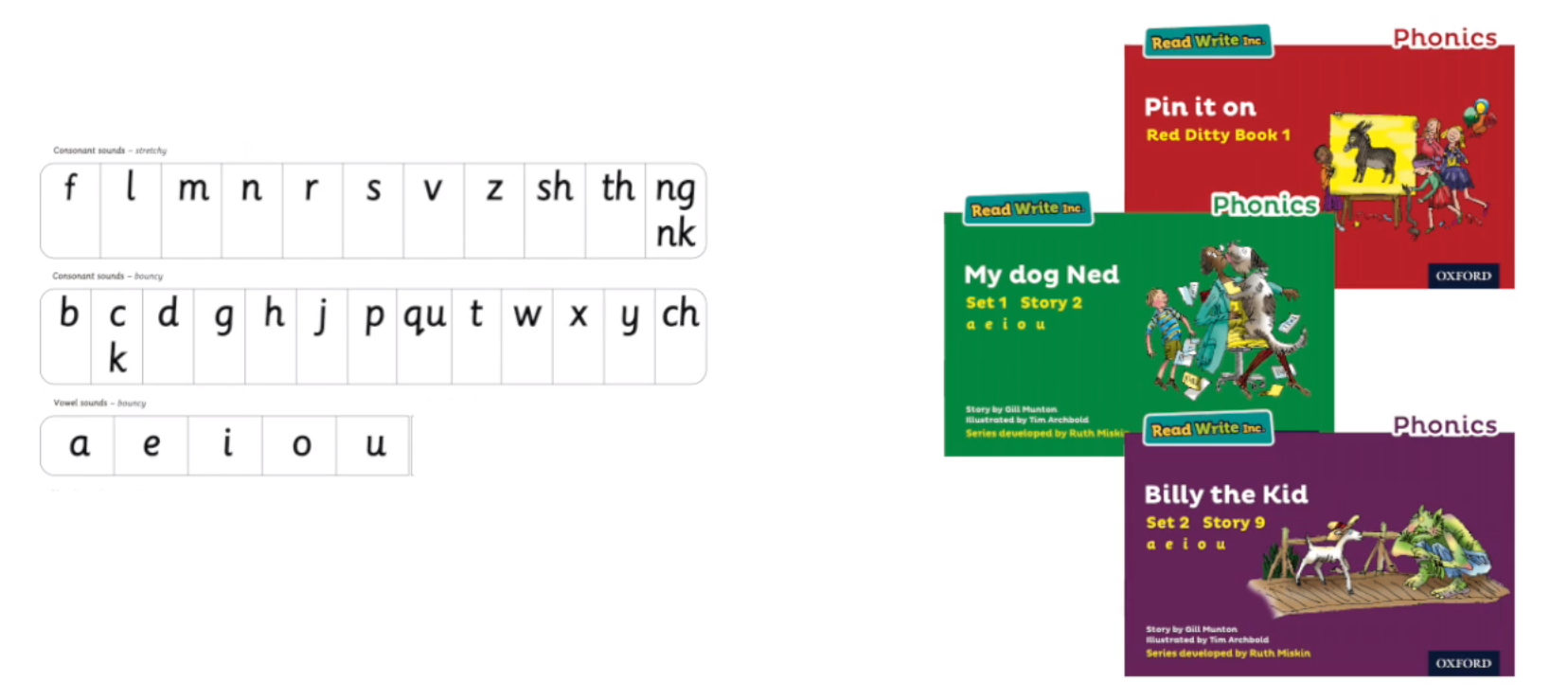
See below for a link to print off set 1 flashcards to practice at home: Set 1 sounds flashcards
Set 2 Sounds (Read Write Inc)
Once children are familiar with the Set 1 sounds we introduce digraph (2 or more letters that together make one sound). We call these ‘Special Friends’. We use a picture and rhyme to help us remember the sounds.
We use pictures and rhymes as a hook to help children remember the letters.
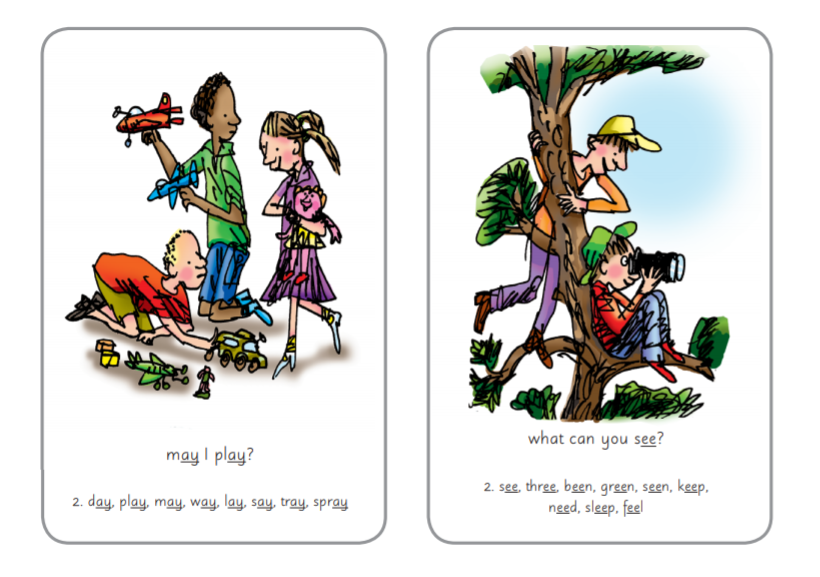
ay – may I play?
ee – what can you see?
Children then read words that are carefully matched to the sounds that have been taught.
See below for a link to print off set 2 flashcards to practice at home Set 2 Flashcards
Set 3 Sounds (Read Write Inc)
Once they can read these sounds confidently we teach new way to read the same sounds. As they learn more spellings of the sounds, the books they read contain more spellings.

Children only read books with the sounds they know. This way they build confidence quickly.
See below for a link to print off set 3 flashcards to practice at home Set 3 Flashcards
Spelling
In school we use ‘Fred-fingers’ to help to spell green words (word containing sounds we already know). This is the process children are taught to use to help them write words.
- Hold up the correct number of fingers for the sounds (ie. 3 for top)
- Say the word e.g. top.
- Say the sounds as you pinch each sound onto 3 fingers: t-o-p, look at your own fingers as you do it.
- Ask your child to repeat it.
Children then use their ‘fred-fingers’ to write the sounds. Then we check the spelling of each sound. Fred the Frog helps us ‘sound-talk’ words.


